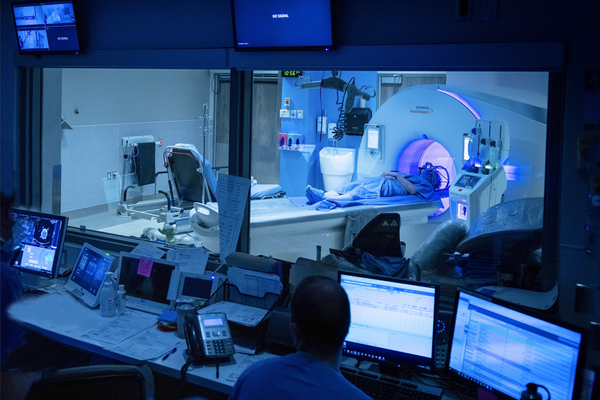Mobile Menu
- Education
- Research
-
Students
- High School Outreach
- Undergraduate & Beyond: Community of Support
- Current Students
- Faculty & Staff
- Alumni
- News & Events
- Giving
- About
Carolyn Morris
When researchers at U of T’s Tanz Centre for Research in Neurodegenerative Diseases found a genetic mutation related to increased risk of Alzheimer’s disease in 2013, they uncovered a potential drug target. Involved in inflammation — it’s a side of the disease that’s often overlooked in efforts to develop treatments.
Now, through a key collaboration with San Diego’s Sanford Burnham Prebys Medical Discovery Institute — a partnership supported by donors Karen and Stuart Tanz — the scientists are moving their research insights into drug development.
“People used to think inflammation was just a reaction to Alzheimer’s disease —like the swelling that happens after an injury,” says University Professor and Tanz Centre Director Peter St George-Hyslop. “But it’s now clear that inflammation is part of the disease pathway itself.”
The gene in question, dubbed TREM2, creates a protein located on the surface of microglia — cells that serve as the brain’s clean-up crew. Researchers believe the mutation decreases function in these cells, which leads to inflammation and build-up of harmful protein debris.
 Along with tackling the beta-amyloid and tau proteins known to accumulate in the brains of Alzheimer’s patients, St George-Hyslop insists we need to expand our focus to the microglia clean-up crew.
Along with tackling the beta-amyloid and tau proteins known to accumulate in the brains of Alzheimer’s patients, St George-Hyslop insists we need to expand our focus to the microglia clean-up crew.
This is precisely what the research collaboration is doing — now with the help of a three-year $1.3 million National Institutes of Health research grant, announced in April.
As the Tanz Centre researchers make genetic discoveries and test how proteins interact within the complex environments of cells and organisms, the San Diego researchers then use that information to develop strategically structured compounds.
“We make the target protein, and they develop compounds that could bind to it,” explains St George-Hyslop. “They then send us compound candidates, and we test to see what effect they produce in a real cell.”
Among the proteins and compounds travelling back and forth between Toronto and San Diego, the researchers hope to identify a treatment that could slow down the progression of this devastating disease.
“We need to take a comprehensive approach to understanding and tackling Alzheimer’s disease, and not just focus on any one area on its own,” says St George-Hyslop. “Reducing inflammation is not the only solution, but it’s an important piece of the treatment puzzle.”


